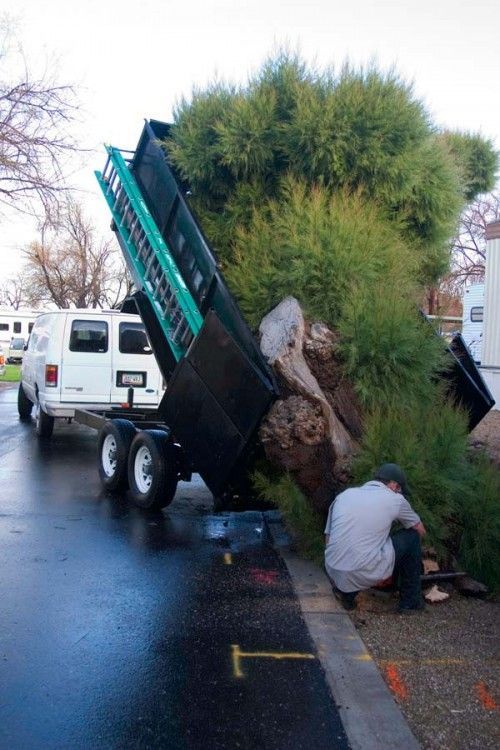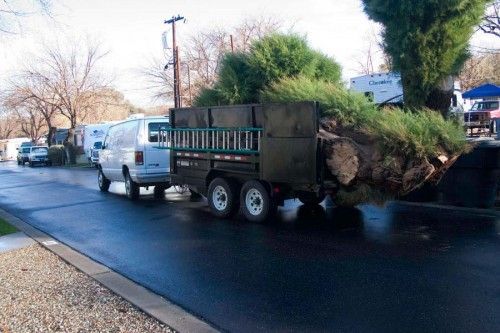Saltcedar
(Tamarix spp.)

Saltcedar
Tamarix spp.
Saltcedars (Tamarix spp.) are an introduced species that has been growing in the western United States for over 100 years. We have many large trees in our area that must be about that old, but there is one less than this morning!
Saltcedar trees (or large shrubs) were originally introduced from Eurasia as ornamentals and later were used for erosion control. Eight different species were introduced – three escaped cultivation and became invasive. As with many of the things men have introduced outside their normal range, the Saltcedar has caused a number of problems. It is now considered a noxious weed in many areas, and control is mandatory.
The first problem with Saltcedars is that they have extensive root systems which can out-compete native plants including native grasses, forbs & shrubs along with willows and cottonwoods. These extensive root systems can actually draw down the water table, with a mature tree using over 200 gallons of water a day according to some sources!
Very little will grow under a Saltcedar because of the second problem – salts accumulate in the soil from leaf litter and from the excretion of salt from living leaves. This process gradually form a salt crust on the soil that reduces competition. This means that over time, pure stands of dense Saltcedar form along riparian corridors. These monocultures do not support the diversity of wildlife that native vegetation does.
A mature Saltcedar can produce over 500,000 seeds and they can start producing seed when they are only one year old! The seeds are short-lived, but fast germinating. Also, Saltcedars will sprout vegetatively from roots or cut stems. (I have sprayed Saltcedar with a strong Roundup solution and it didn’t have any effect!) Because of this, Saltcedars are not easy to control. I have collected adults of one Buprestid species (Chrysobothris octocola) on Saltcedar – they seem to be generalists. Several Eurasian insect species are under consideration for use as biological control agents.
We were called out to remove a large Saltcedar stump that has been repeatedly topped and trimmed until it resembled a gigantic femur bone sticking up into the air. It resided right next to the trash cans in a trailer park, and had gotten hit several times causing it to lean 10-15 degrees toward the road. I call it a stump, but it was probably 15 ft high and I estimated its weight at 5000. If it were to fall, anything in its path would be crushed – that is why we bumped this job up to the top of the list.
A call to “Bluestake” resulted in us finding out that electric, water and gas all ran right under this tree! There would be no digging this one out!
I came up with a plan for removal that I have never used before. If it would work, we could be done very quickly, and would not have to charge that much for the labor – only a huge dump bill!
What I proposed to do was to raise the bed of the dump trailer, then back it in against the tree. We would then simply chain the top of the “stump” into the top of the trailer and cut it off at the ground. We could then lower the bed of the trailer and take it to the transfer station (dump)!
The first problem we ran into was that the top of the “stump” was wider than the trailer. We kindof squeezed it in as far as we could. The second problem was that it rained a lot over the weekend and everything was dripping wet and slippery. We were able to finally get up onto the top of the trailer and get the chains on. Here is what it looked like:

The next problem was that the bar on the chainsaw wasn’t long enough to cut all the way through and there was a rock wall next to the tree (just outside the right side of the picture). Shannon had to climb back in between the tree and the wall to cut the backside of the tree. Finally it was cut enough that we could lower the bed a little and open the saw kerf. There was some slack in the chains, but not enough to cause trouble. When it was mostly cut through I lowered the trailer completely and the last few strands of wood fiber parted.
The entire center of the trunk was rotten with only 1″ to 4″ of good wood around the perimeter. Talk about an accident waiting to happen!
